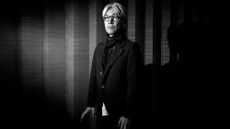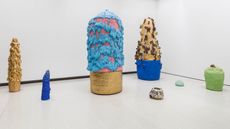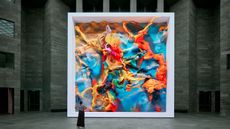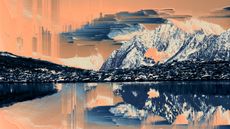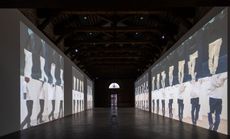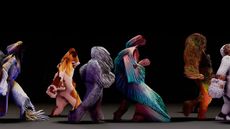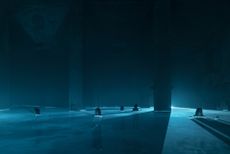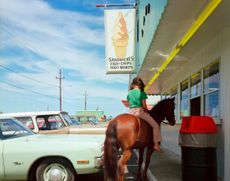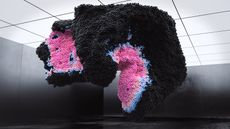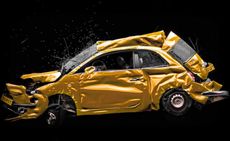A’strict: the South Korean digital art collective bringing nature to urban life
As part of our Generation Generative series, we spotlight a’strict, the artistic unit of South Korean digital media design company d’strict, whose immersive art aims to bring viewers closer to nature
- (opens in new tab)
- (opens in new tab)
- (opens in new tab)
- Sign up to our newsletter Newsletter
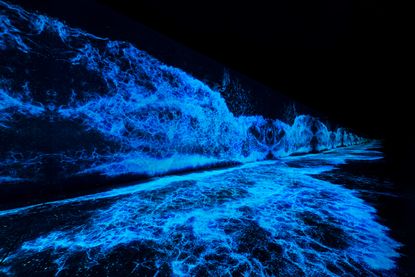
A colossal wave crashing onto the two-sided rectangular LED display on the external façade of COEX in Seoul’s Gangnam district was a sight that captivated many Seoulites. They stopped to stare, mesmerised, into a three-dimensional tank of screens that offered a cathartic visual experience.
On the other side of the world, a larger-than-life waterfall flowed in the middle of Times Square in New York, stealing the show amid the visual noise of its surroundings.
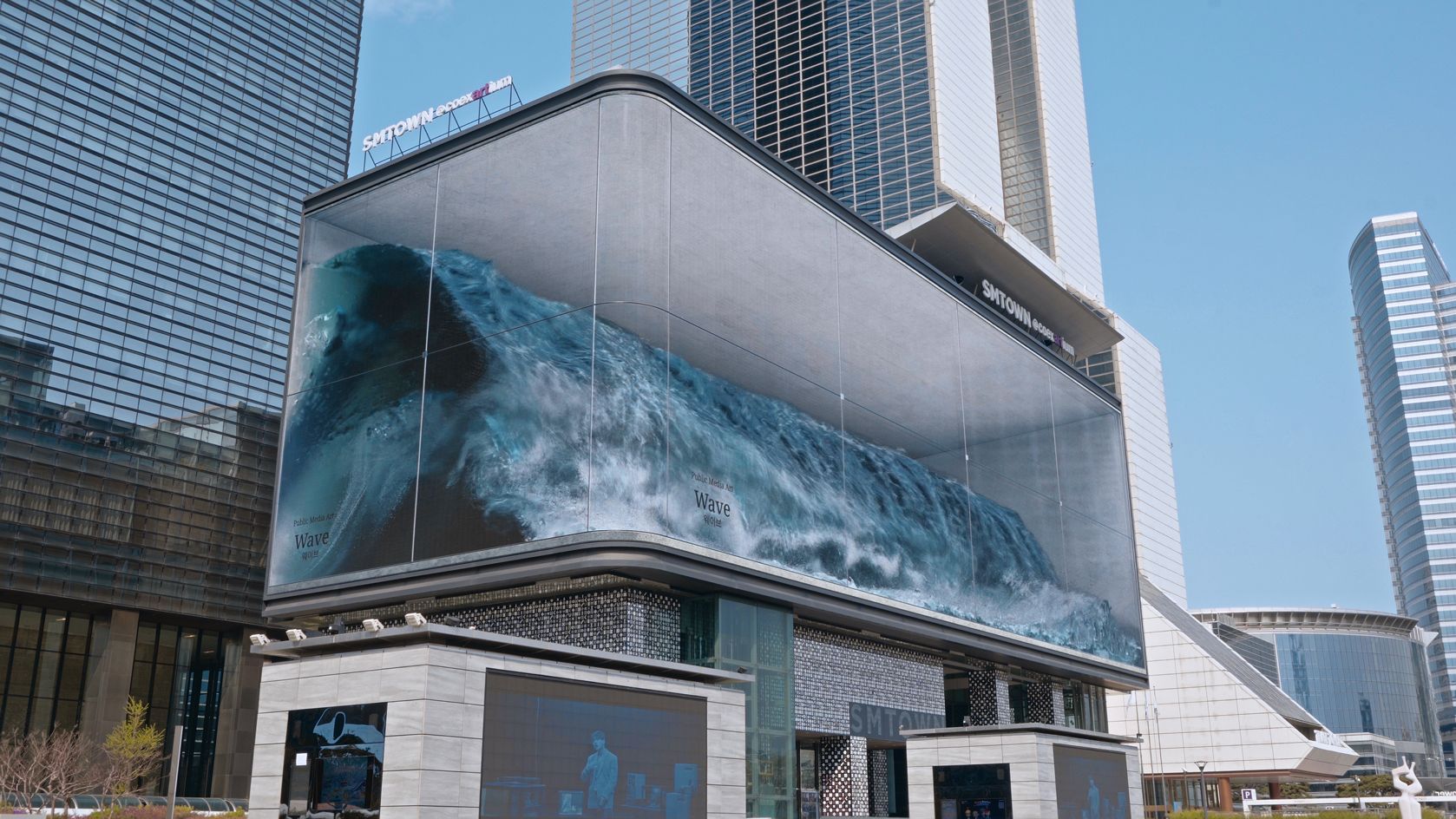
Wave, by a'strict at COEX Seoul
WAVE (2020) and Waterfall-NYC (2021) by South Korean digital media design company d’strict are two of many public artworks that astonished crowds amidst the pandemic and catapulted the firm to fame with their instantly-recognisable, captivating aesthetic. Both pieces were created using anamorphic illusion, a type of projection technique used to create an illusion of depth and three-dimensionality.
While d’strict now frequently collaborates with big-name brands, a’strict – the artistic arm of the company – is open to digital media artists from both within d’strict and outside. A’strict functions as an art collective creating non-commercial artwork with more creative freedom.
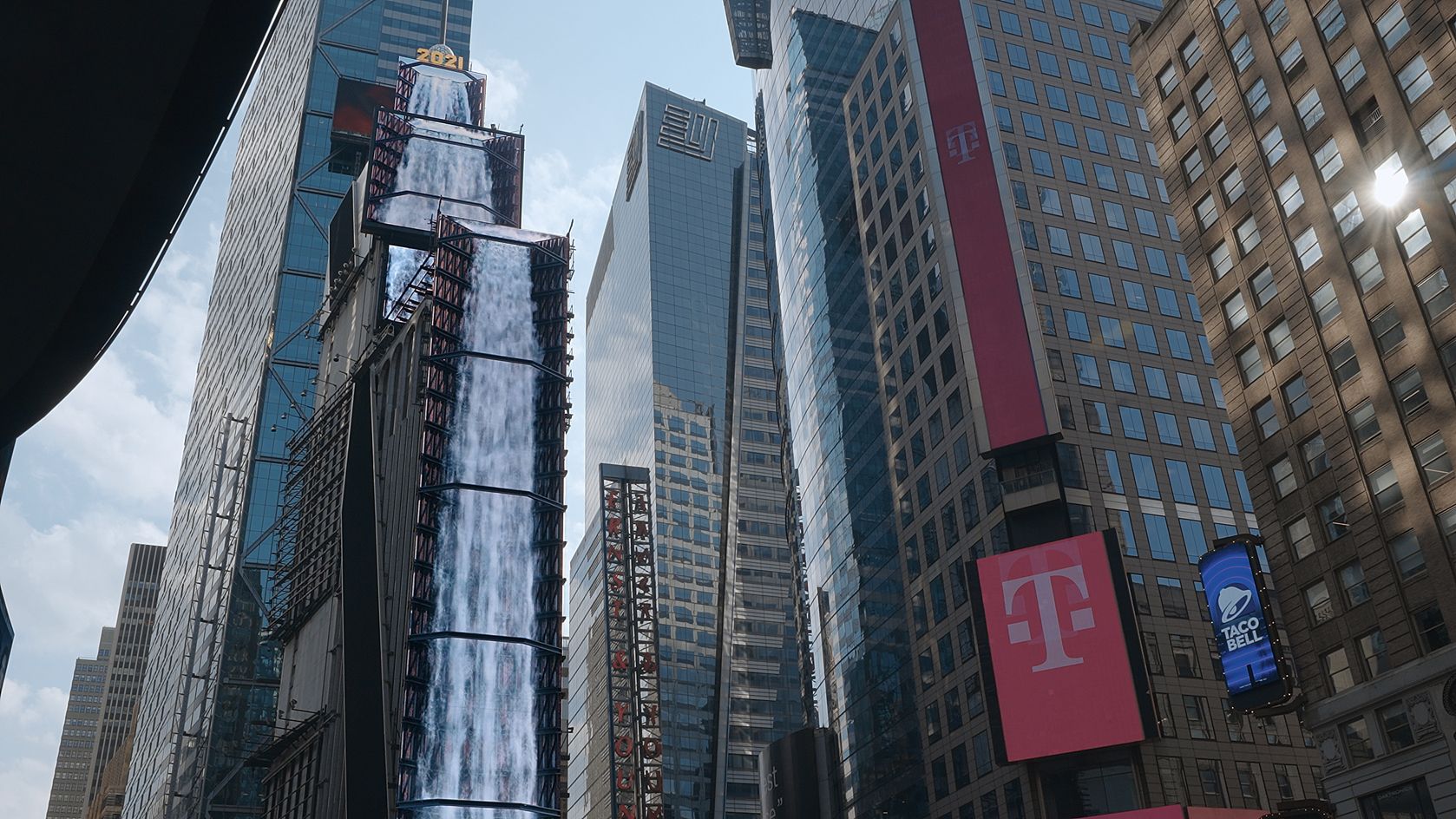
Waterfall-NYC, by a'strict, displayed in Times Square, New York
‘Among our projects, WAVE was the most popular. I think it came from the unexpectedness of the artwork in the middle of the city. No one would expect a wave to be there and to be so real,’ said Sang Jin Lee, vice president at d’strict. ‘Timing worked well for us because we became well-known during the pandemic. Waves and waterfalls in the middle of the city provided solace and were a stress reliever for many, in times of frustration. I think this made our work connect with the audience,’ she says.
Starry Beach (2020), exhibited at Kukje Gallery in Seoul in September 2020, is an example. Maximising sight and sound, a’strict created an intuitive and immersive beach experience, which enthusiastic visitors queued for hours to see. Morando (2021), which was shown at the much-acclaimed ‘LUX: New Wave of Contemporary Art’ show at London’s 180 The Strand, uses an X-ray technique to depict infinitely blooming peonies and the ethereal cycle of life.
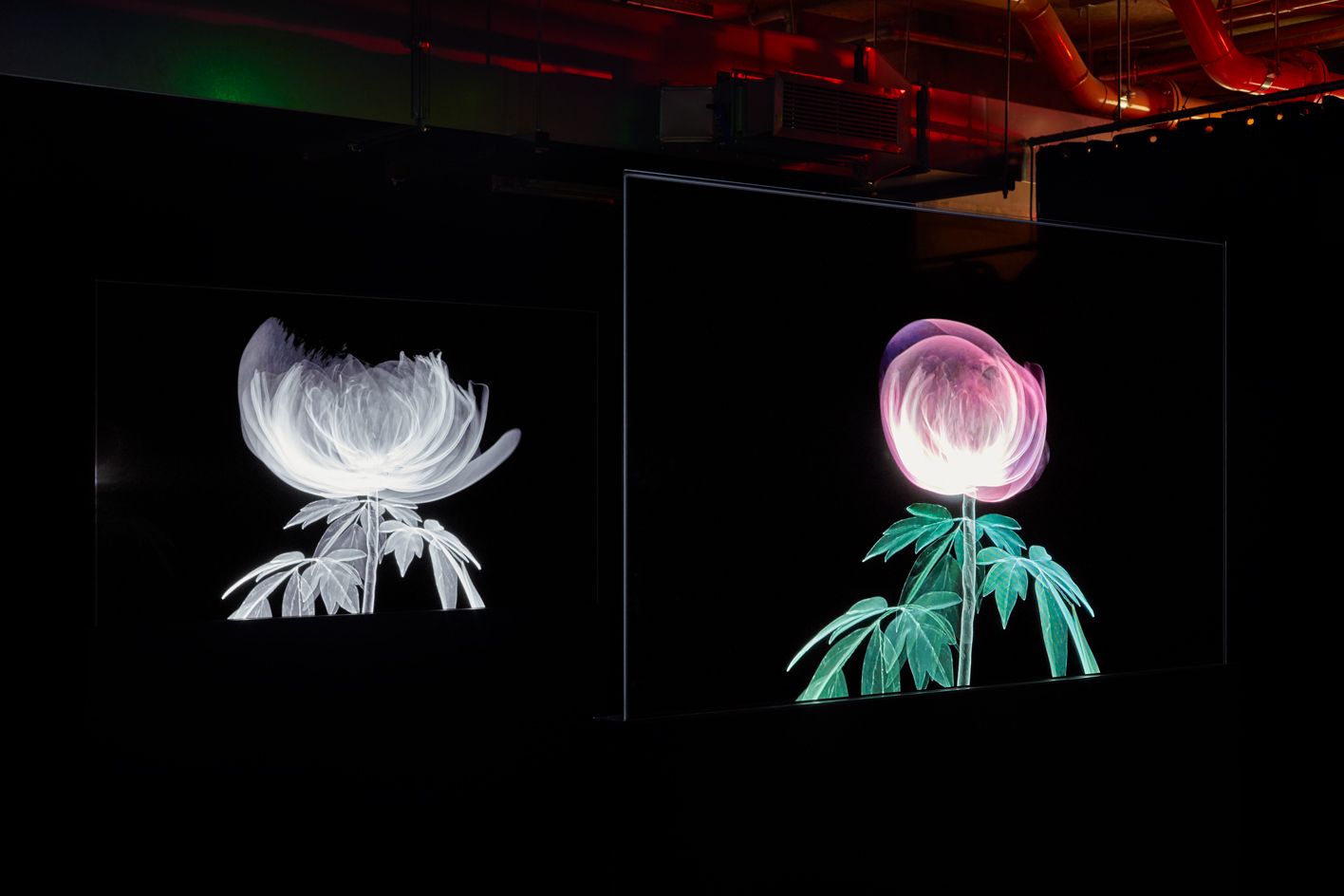
A'strict, Morando, in 'Lux' at 180 Studios, 2021
‘A’strict focuses on intuitive artwork which can be enjoyed without prior knowledge of art and something that can resonate with people’s everyday lives,’ Lee explains. ‘Nature is a theme that people can intuitively resonate with and immerse in, and also gives them a sense of comfort.’
Through immersive digital art installations, both d’strict and a’strict aim to bring nature closer to people’s lives. D’strict’s own exhibition space, Arte museum, is structured around nature-orientated themes such as ‘beach’, ‘wave’, ‘waterfall’, ‘forest’, ‘flower’, ‘garden’, and ‘jungle’, to name a few. The museums are currently located in Jeju, Busan, Gangneung and Yeosu in Korea, with d’strict’s first overseas branch having debuted in Hong Kong in October 2022. Plans for 2023 include museums in Las Vegas, New York, Los Angeles, and Chengdu.
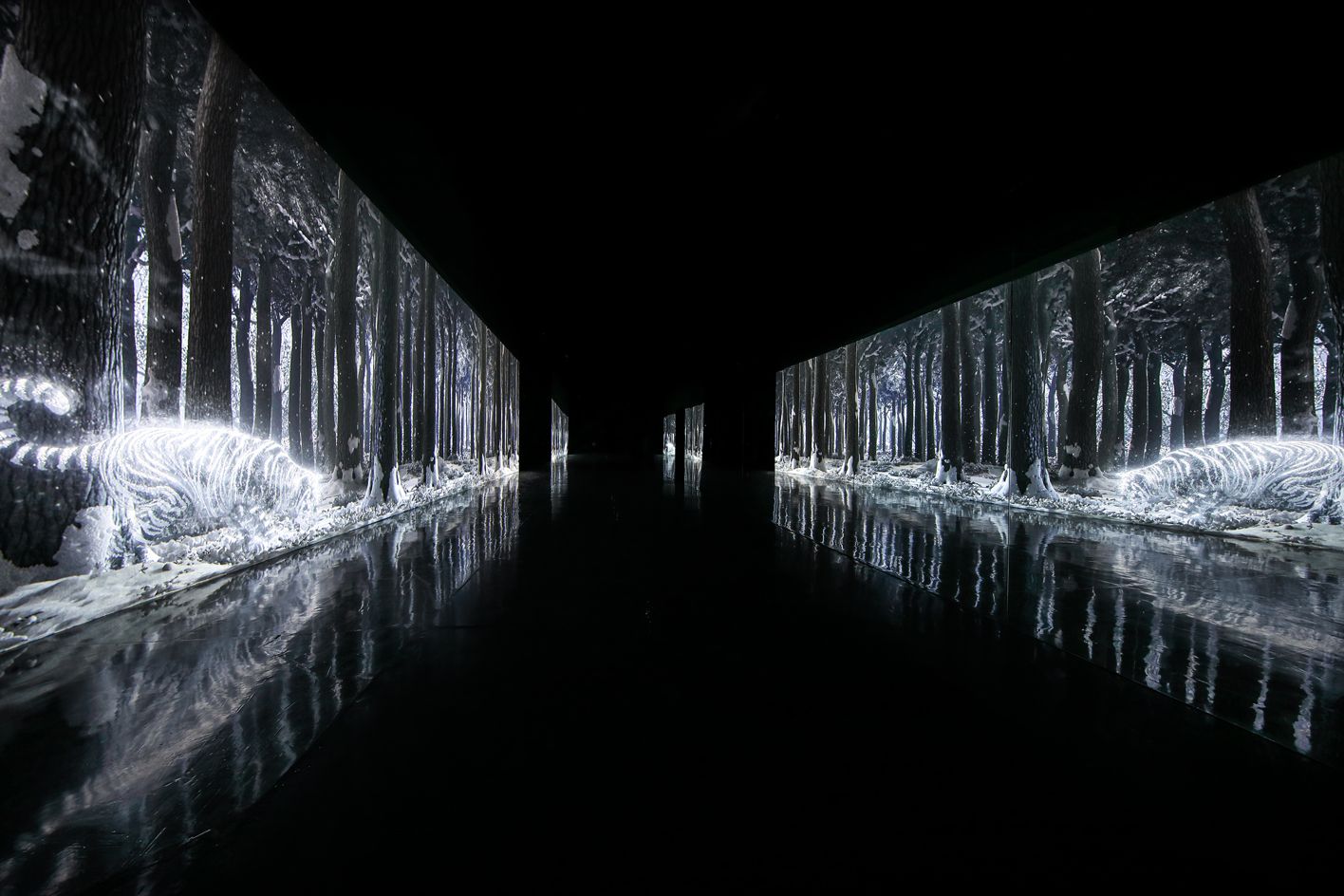
A'strict, Forest, at the Arte Museum in Gangneung
As well as anamorphic illusion, generative art technology is also an integral part of a’strict’s work. A recent collaboration with crypto artist duo Hackatao resulted in Spirit Forest Incanto, in which a reindeer changes its colour subject to the movement and behaviour of visitors. The colour of the reindeer – red, green, yellow, etc. – is responsive to how visitors walk towards them or touch them. Using code, the reindeer can generate multiple appearances that shift based on subjective input.
A’strict will soon launch a flower project titled Mugunghwa, which uses generative technology to produce multiple variations of Korea’s national flower. The aim is to create 815 different variations of the flower to be sold as NFT editions, meaning that each collector can own a unique version. The flower will be incubated and exhibited from the seed stage in one museum, then presented as a blossomed flower in a travelling show across Arte museums across Korea.
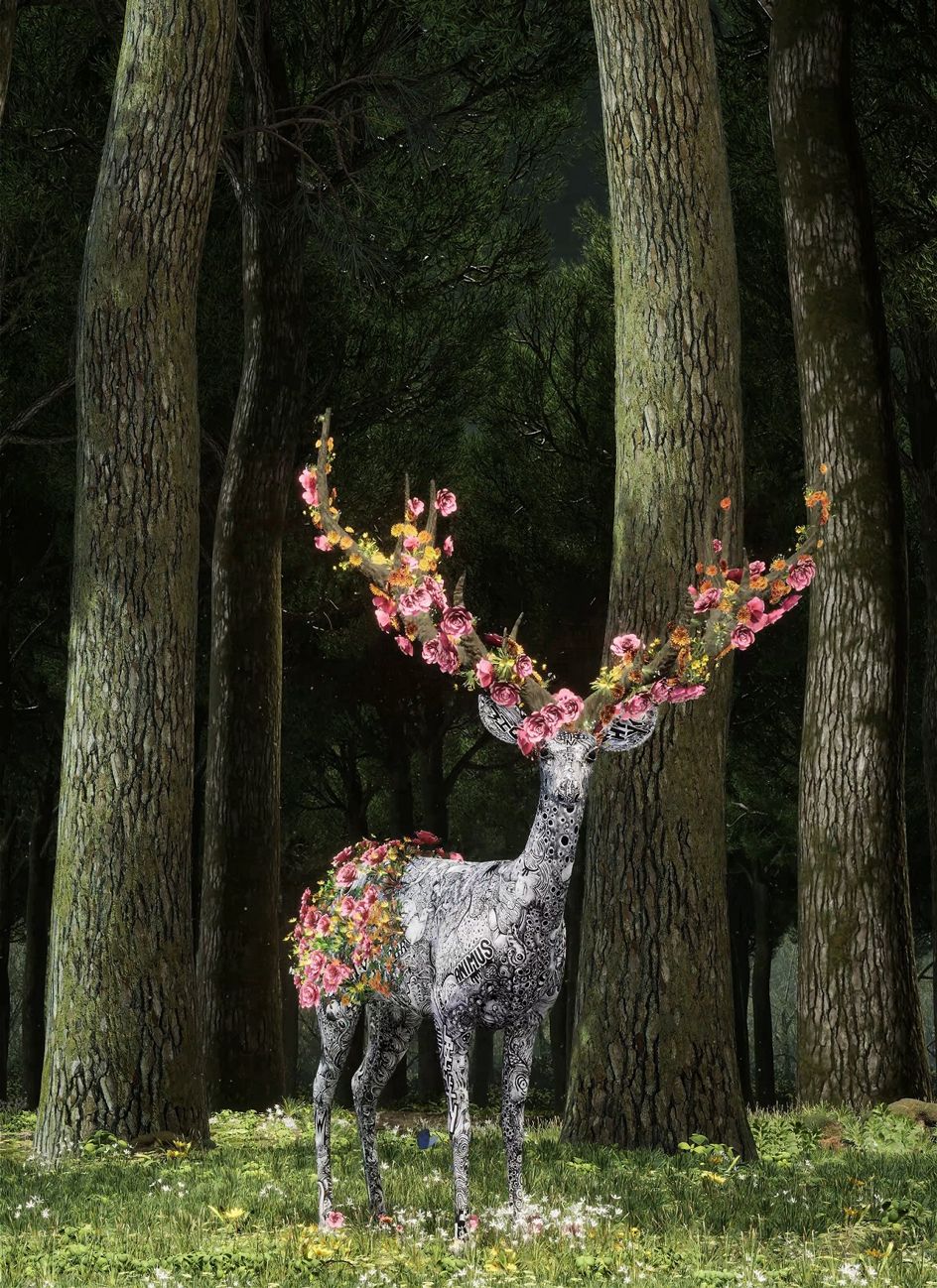
Arte Meta and Hackatao, Spirit Forest Incanto
‘Using a technology called real-time engine, the flower will be coded to bloom and die continuously and change its colours. The characteristic of generative art is that there is no beginning and end. The work keeps moving,’ said Lee.
‘For example, if we code to create five red flowers in five types of shapes with five different stems, we will have multiple random variations possible within this setting. We can also program it to reflect the reality, such as when it snows, the flower will be white, if it rains, it will turn yellow and so on.’
D’strict also has a crypto art project arm called Arte Meta under which these NFT projects are handled.
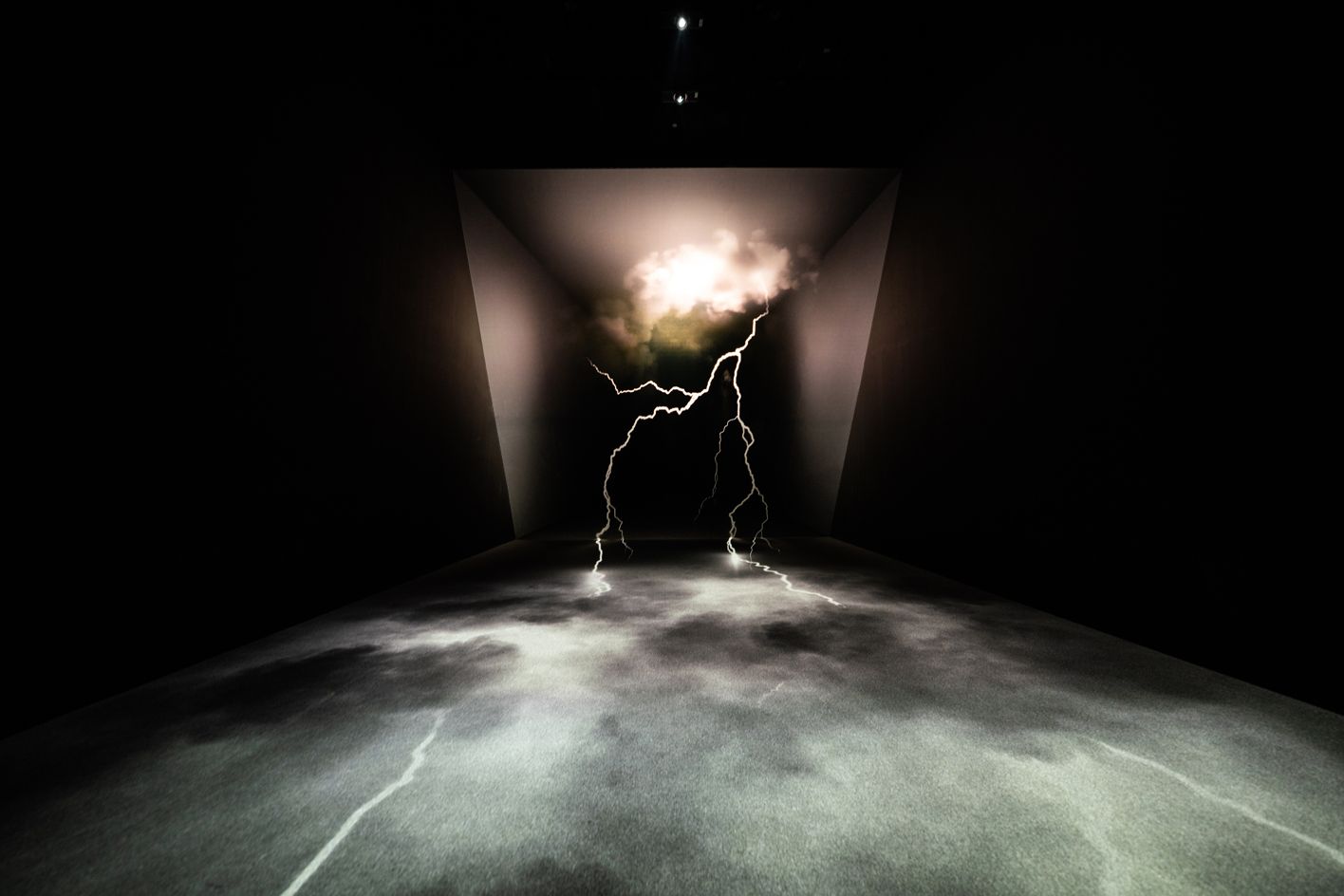
A'strict installation view at the Arte Museum in Gangneung
The digital revolution in generative art emerged due to NFTs, says Lee. ‘For NFT artworks, many of them have to be mass-produced and often each one represents each person’s identity so each work would have to be unique. Unfortunately, it is difficult to create 10,000 different variations of an artwork,’ she said.
‘People started using generative technology to produce random variations of works. What differentiates generative art from randomness, however, is that combinations will be made from pre-coded settings.’
D’strict’s next project will touch on environmental issues. ‘Ice’ will be a work of anamorphic illusion of the arctic melting, exhibited at one of its Arte museums. ‘It won’t be an explicit statement on saving the environment, but it can send a message indirectly,’ said Lee.
dstrict.com (opens in new tab); kukjegallery.com (opens in new tab)
-
 These artists are putting their stamp on the ‘Lady Dior’ handbag
These artists are putting their stamp on the ‘Lady Dior’ handbagNow in its seventh edition, ‘Dior Lady Art‘ invites international artists to reimagine Dior’s Lady Dior handbag – one of the house’s most memorable styles
By Jack Moss • Published
-
 Watch Ryuichi Sakamoto's mesmerising musical experience at the Brooklyn Museum
Watch Ryuichi Sakamoto's mesmerising musical experience at the Brooklyn MuseumAn iconic composer who traverses popular and high culture, Ryuichi Sakamoto pushes music into new frontiers, most recently in ‘Seeing Sound, Hearing Krug’, a new composition that pairs sound, flavour, light and texture
By David Graver • Published
-
 Last chance to see: ‘Strange Clay’ at The Hayward Gallery, London
Last chance to see: ‘Strange Clay’ at The Hayward Gallery, LondonAt London’s Hayward Gallery, group show ‘Strange Clay: Ceramics in Contemporary Art’ sees ceramic artists explore the physical, psychological, political and power of their medium
By Emily Steer • Published
-
 Enter the mesmerising, AI-driven world of artist Refik Anadol
Enter the mesmerising, AI-driven world of artist Refik AnadolRefik Anadol’s masterly use of data sets and AI models allows him to create dazzling ‘living paintings’, now on display in MoMA’s Gund Lobby
By TF Chan • Published
-
 Generative art: the creatives powering the AI art boom
Generative art: the creatives powering the AI art boomIt’s a new age for generative art, thanks to pixel-sorting, algorithm-sifting creatives. While the NFT market remains in flux, we delve into the rise of generative art, and the AI art boom
By Nick Compton • Published
-
 Bruce Nauman’s Venice mega-show is a full body experience
Bruce Nauman’s Venice mega-show is a full body experienceFocusing on the American artist's performative 'Contrapposto Studies', Bruce Nauman's show at Punta della Dogana, Venice, gives new meaning to body language – on view until 27 November 2022
By Laura May Todd • Published
-
 Universal Everything: the collective bringing mind-bending physicality to the digital space
Universal Everything: the collective bringing mind-bending physicality to the digital spaceIn our new profile series, Generation Generative, we spotlight pioneers on the cutting edge of generative art. Our first feature is on Sheffield-based digital art collective Universal Everything, whose solo show ‘Lifeforms’ at 180 The Strand runs from 12 October – 4 December
By Nick Compton • Published
-
 Artist Ian Cheng explores the technological and aesthetic potential of AI
Artist Ian Cheng explores the technological and aesthetic potential of AIIn Berlin’s cavernous Halle am Berghain, New York-based artist Ian Cheng plunges viewers into an immersive world of AI and existential anime in ‘Life After BOB’
By Will Jennings • Last updated
-
 Could NFTs spark a photography revolution? Meet the innovators
Could NFTs spark a photography revolution? Meet the innovatorsAs Web3 platform Fellowship brings world-class photography to the blockchain, including newly minted work by Joel Meyerowitz and Pieter Hugo, we explore how NFT photography is changing how we buy, sell, authenticate and experience art
By Jessica Klingelfuss • Last updated
-
 Maxim Zhestkov’s hypnotic digital art makes virtual worlds tangible
Maxim Zhestkov’s hypnotic digital art makes virtual worlds tangibleAhead of a major installation at London’s W1 Curates, digital artist Maxim Zhestkov discusses the creative potential in merging physical and virtual realities: ‘my work is about this thin membrane that separates us from the future’
By Harriet Lloyd-Smith • Last updated
-
 Smash hit: Ron Arad’s first NFT drop takes things up a gear
Smash hit: Ron Arad’s first NFT drop takes things up a gearDesigner, artist and architect Ron Arad joins the NFT crowd with the help of curatorial platform Shifting Vision
By Nick Compton • Last updated

